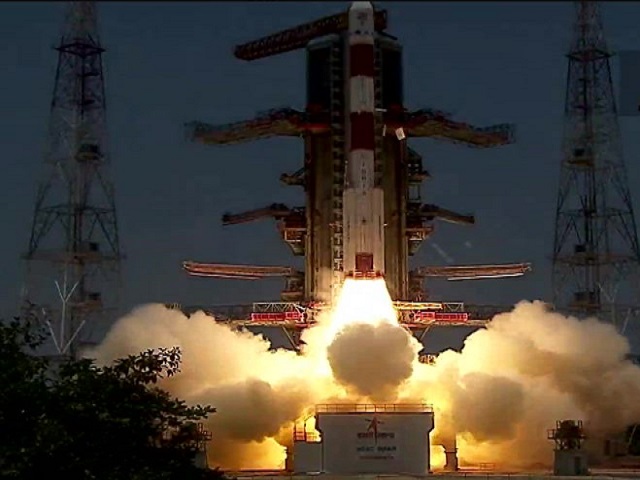Aditya-L1: India’s first mission to sun launched in Sriharikota
Aditya-L1 will be ejected in a low earth orbit. Then it will be elliptical. As the spacecraft travels towards L1, it will exit the earth’s gravitational Sphere of Influence
Sriharikotta: Days after scripting history on the Moon, ISRO launched a rocket today to study the sun from Satish Dhawan Space Centre in Sriharikota, Andhra Pradesh. The most trusted PSLV will carry the Aditya L1 mission on a 125-day voyage to the Sun.
The PSLV-XL variant rocket carries the 1,480.7 kg Aditya-L1 spacecraft as its sole passenger that will study the solar activities.
The 44.4 metre tall PSLV-C57 rocket with a lift off mass of 321 ton carrying Aditya-L1 named after the Sun God in Hindu mythology blasted off from the second launch pad at the Satish Dhawan Space Centre (SDSC) here at 11.50 a.m.
Slowly rising up towards the skies with a thick orange flame at its tail, the rocket gained speed with a sound resembling rolling thunder and went up and up leaving a thick plume while the people assembled at the viewing gallery clapped their hands with pride.
Interestingly, this will be one of the longest missions for the rocket as well as for Indian Space Research Organisation (ISRO).
About 63 minutes after the lift off, the rocket will eject Aditya-L1 and the whole mission comes to an end at about 73 minutes with the passivation of the fourth stage.
The flight plan includes switching off the rocket’s fourth stage twice, allowing it to coast for about 30 minutes – 26 minutes after the first cut off and about 3 minutes after the second cut off.
Initially, Aditya-L1 will be ejected in a low earth orbit (LEO). Then the orbit will be elliptical. As the spacecraft travels towards the Sun-Earth Lagrange Point (L1), it will exit the earth’s gravitational Sphere of Influence (SOI).
After exit from SOI, the cruise phase will start and subsequently the spacecraft will be injected into a large halo orbit around the L1 the point where the gravitational pull of two large bodies Sun and Earth will be equal and hence the spacecraft will not gravitate towards any one of the planet.
The total travel time from launch to L1 would take about four months for Aditya-L1 and the distance will be about 1.5 million km from the Earth.




 Ms Kalinga
Ms Kalinga